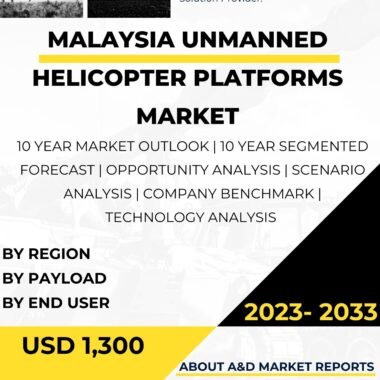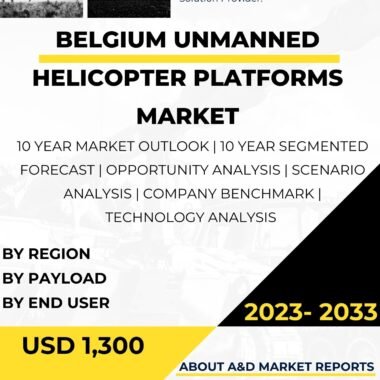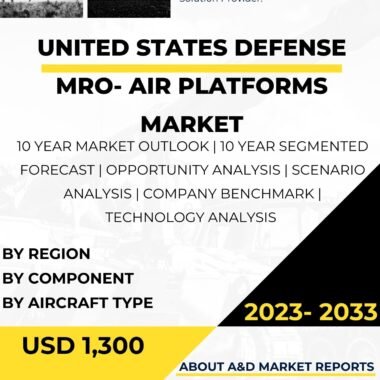Description
The South Korea unmanned helicopter platforms market is a critical and rapidly growing segment of the country’s defense industry, providing advanced aerial robotic systems that offer a wide range of applications, from intelligence, surveillance, and reconnaissance (ISR) to cargo transportation and search and rescue operations. Unmanned helicopter platforms play a pivotal role in modern military operations, providing the military with enhanced capabilities for various missions, while reducing risks to personnel and increasing operational efficiency. South Korea’s focus on indigenous development, strategic partnerships, and technological innovation has positioned it as a notable player in the global unmanned helicopter platforms market.
Unmanned helicopter platforms, also known as unmanned aerial vehicles (UAVs) or drones, are aerial systems that operate without human intervention on board. These platforms are equipped with advanced sensors, cameras, and other payloads, making them highly versatile and suitable for a wide range of missions. Unmanned helicopters are capable of performing tasks such as reconnaissance, surveillance, target acquisition, cargo transportation, and medical evacuation.
Indigenous development has been a cornerstone of South Korea’s approach to the unmanned helicopter platforms market. The country’s defense industry, represented by companies like Korea Aerospace Industries (KAI) and Hanwha Systems, has made significant strides in developing advanced unmanned helicopter platforms tailored to meet the specific requirements of the South Korean military.
The South Korean military heavily relies on unmanned helicopter platforms to enhance its ISR capabilities, support ground forces, and conduct intelligence gathering and reconnaissance missions. These unmanned platforms play a vital role in providing real-time information and situational awareness to commanders, improving decision-making and operational effectiveness.
Beyond defense applications, unmanned helicopter platforms also have civilian uses in South Korea. Some UAV technologies have been adapted for civilian purposes, such as aerial surveying, environmental monitoring, and disaster response.
South Korea’s commitment to innovation and research and development (R&D) has driven significant advancements in unmanned helicopter platform technology. The country invests in R&D programs to improve UAV endurance, payload capacity, and autonomous capabilities. Technological improvements focus on enhancing flight stability, communication systems, and sensor integration.
Strategic partnerships with international defense and technology companies have also contributed to South Korea’s unmanned helicopter platforms capabilities. Collaborations enable technology transfer, joint research, and the integration of foreign UAV systems into South Korea’s indigenous platforms, enriching the overall unmanned helicopter platform capabilities of the country’s defense industry.
To ensure optimal utilization and proficiency in operating unmanned helicopter platforms, South Korea places significant emphasis on training and skill development for its military personnel. Training programs focus on familiarizing operators with UAV controls, autonomous operations, and effective utilization in various operational scenarios.
Moreover, safety and reliability are paramount considerations in the unmanned helicopter platforms market, given the importance of ensuring the safe operation of these aerial systems. South Korea adheres to stringent safety protocols and UAV maintenance standards to ensure the reliability and performance of unmanned helicopter platforms, minimizing the risk of accidents and ensuring mission success.
In conclusion, the South Korea unmanned helicopter platforms market is a critical aspect of the country’s defense capabilities. Indigenous development, strategic partnerships, and innovation have allowed South Korea to create advanced unmanned helicopter platforms that meet the specific needs of its military and contribute to enhancing its aerial reconnaissance and surveillance capabilities. From providing ISR support to ground forces to conducting search and rescue missions, unmanned helicopter platforms play a pivotal role in strengthening South Korea’s military capabilities and safeguarding its national security. As the defense industry continues to evolve, South Korea’s dedication to advancing its unmanned helicopter platform technology will remain essential in maintaining its position as a major player in the global UAV market.




